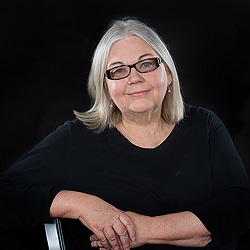Click for Printable CV

Elizabeth Ingraham is a sculptor whose work gives form and voice to lived experience and ranges widely across a physical and cultural terrain. She has an MFA in Sculpture from the University of California Santa Barbara and prior to her training in sculpture she was a lawyer for Alaska Native groups, working on the settlement of their aboriginal land claims.
She received the Thatcher Hoffman Smith Award for Creativity for her series of life-size sewn fabric “skins” sculptures, and these sculptures, together with her poetry, became the basis for SKINS, a multimedia theatrical performance directed by Kathryn Moller and performed at La MaMa Theatre in New York City. The Museum of Nebraska Art and the Racine Art Museum have acquired pieces from the Skins series for their permanent collections.
Her nine-year project, Mapping Nebraska, is a stitched, drawn and digitally imaged cartography (physical and psychological) of that state and is the result of 9,500 miles of travel on state and county roads. Mapping Nebraska received the Distinguished Artist Award in 2013 from the Nebraska Arts Council and work from the project toured the state as the centerpiece of the Sheldon Museum’s "Picturing Nebraska" series of traveling exhibitions. A solo exhibition of this work, "Regarding Nebraska," was displayed at the International Quilt Museum in Lincoln in 2017 and the entire project has since been acquired by the museum for their permanent collection.
She is a Fellow of both the Center for Great Plains Studies at the University of Nebraska-Lincoln and the International Quilt Museum and she has been teaching design and creative thinking at UNL since 1998. As part of a team with faculty from Computer Science and Educational Psychology she has two National Science Foundation grants to integrate creative thinking into computer science and other courses. Her online course, Computational Creativity, comes out of this NSF research and one of the creative thinking exercises in this course won a national computer science curriculum award from NCWIT, the National Center for Women & Information Technology.
Her research into computational creativity is part of her on-going interest in combining the digital (pixels and code) with the digital (the work of the hand).